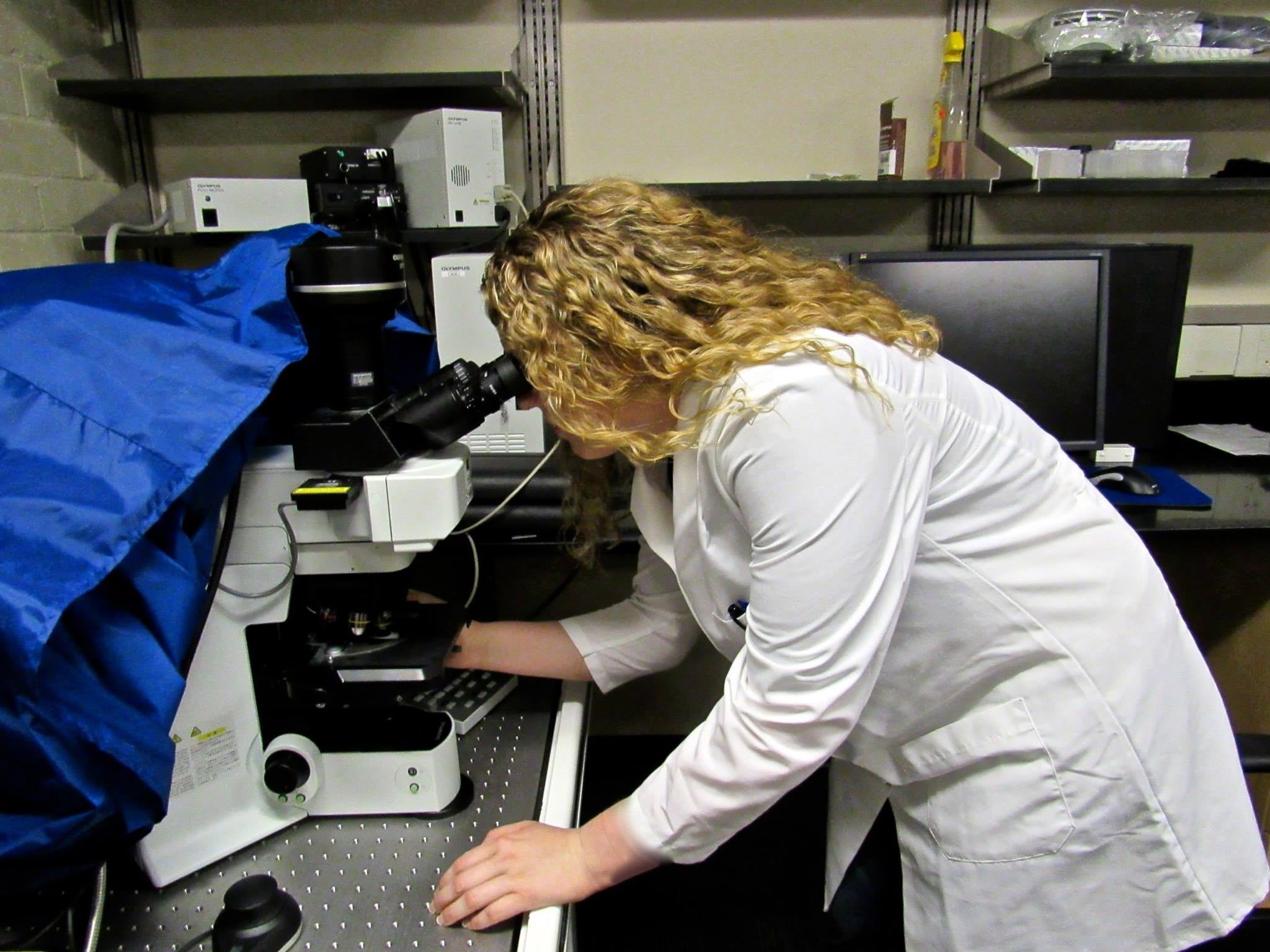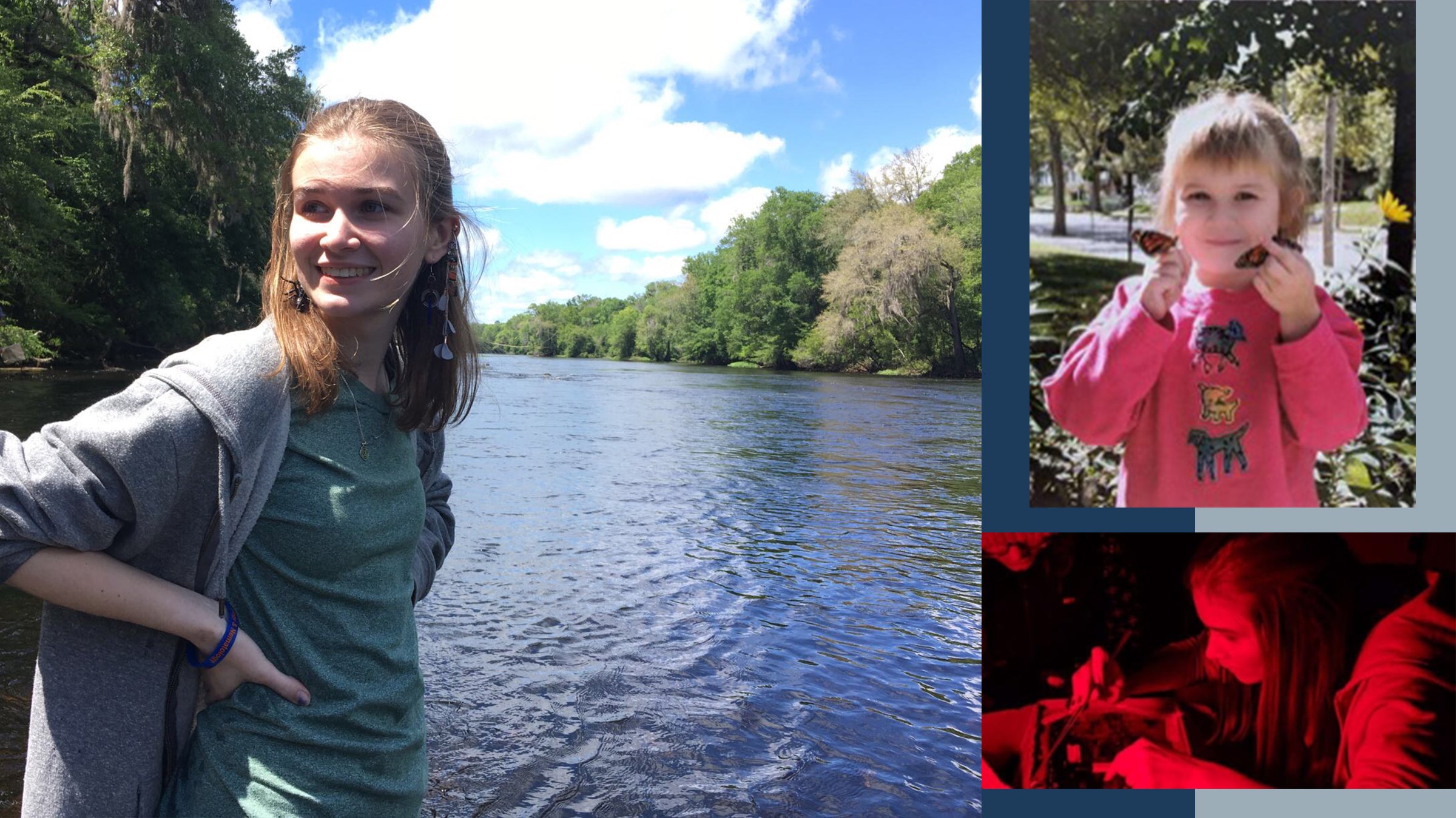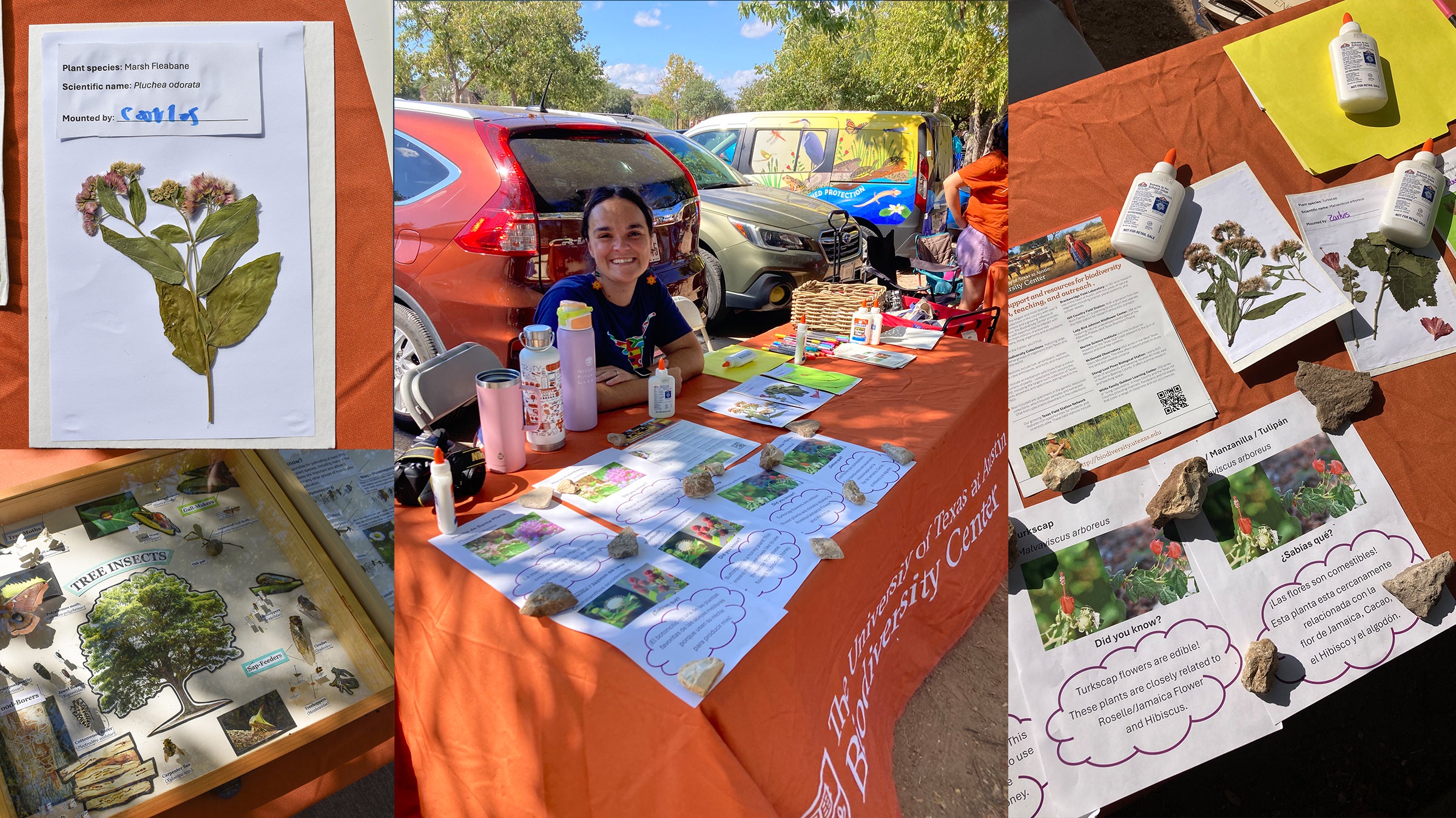
Kathryn Appler is one of our 2022 Stengl-Wyer Fellows. She is a Marine Science Ph.D. candidate in Dr. Brett Baker's Lab where she studies the diversity and ecological role of Asgard Archaea. Kathryn took time from her busy research schedule to talk about her start from a dairy farm to her various world travels, to her present research and outreach passions.
Tell us where you came from before UT, and what you studied then?
I grew up in Iowa, learning about microorganisms and ecosystem diversity as a fourth-generation dairy farmer. Here, I first observed invisible organisms through the lens of a microscope. This experience ignited a curiosity about how microbes alter ecosystems, which has taken me to several unexpected locations. I received my Bachelor of Arts in Biology and Sociology at Coe College in Iowa, where I imaged biofilm community architecture of microbes extracted from squid eggs with confocal microscopy. The day after graduation, I traveled to Santa Cruz, California, to describe the vocalizations and understand the physiology and health of cooperating Arctic seals. From there, I moved to Seward, Alaska, to monitor an endangered population of Steller sea lions, explore the diet composition of walruses, and test biomarkers for oil spills. To expand upon these experiences, I traveled cross-country to the Baker Marine Microbial Ecology Lab at the University of Texas at Austin to use omics-based approaches to study deep-sea microbial diversity.

Imaging biofilm architecture with confocal microscopy at Coe College in Cedar Rapids, Iowa.
What got you interested in studying the diversity and ecological role of Asgard Archaea?
The origin of eukaryotes and the beginning of multicellular life is a longstanding scientific mystery. The discovery of Asgard Archaea through advancing sequencing technology has revolutionized our understanding of this unresolved event. Lokiarchaeota, the first representative of this group, was named for the hydrothermal vent field, Loki’s Castle, and scientists named the additional lineages after Norse gods and goddesses. I am fascinated because untangling the role of Asgard Archaea in the origin of eukaryotes is multifaceted, intersecting different fields. Unraveling this event combines my interest in the metabolic potential of previously undescribed microbes, the interactions between organisms and provides clues on how microbes influence environmental conditions. The diversity and ecological role of Asgard Archaea today provide a glimpse at a more than ~1.75-billion-year-old event and increase our understanding of the evolution of long-term microbial interactions. My project describes novel lineages from this group, which increases our understanding of the role of Asgard Archaea in today’s environments, connecting us to the past.

Winogradsky Columns made by Port Aransas elementary students after presentation about “Exploring the Microbial World."
Does Texas present a unique situation, challenge, or benefit for your research?
Living and learning on the coast at the University of Texas Marine Science Institute enabled me to observe marine ecosystems and share my research with the community. On the coast, I brought my results directly into elementary classrooms, summer camps, and visitors at the education center. One unique challenge is to excite audiences about what they cannot easily see when there is such an incredible amount of charismatic macroorganism diversity in Texas. However, I embrace this challenge by creating microbial enrichments that produce a kaleidoscope of colors and talking about how Loki- and Thorarchaeota are hanging out in our backyard. The engagement of the Coastal Bend keeps me motivated to share my knowledge of the local environment and has increased my ability to describe my research. Further, the connections I developed in Texas have enabled me to collaborate internationally, present my current results at international conferences, and write this blog from researching abroad in Paris, France. These opportunities will allow me to bring a new perspective to my research when I return to the University of Texas at Austin because “What starts here changes the world.”

Researching abroad with Dr. Simonetta Gribaldo's Lab at the Institut Pasteur in Paris, France.
How will being a Stengl-Wyer Fellow help advance your work?
The Stengl-Wyer Fellowship allows me to expand my research on the origin of multicellular life and microbial diversity in deep-sea hydrothermal vents. Through this fellowship year, I will describe in high resolution the metabolism and cellular complexity of this group, utilizing the most diverse and comprehensive catalog of Asgard Archaea. This analysis will add descriptions of previously unknown lineages I extracted and binned from the Guaymas Basin in the Gulf of California. Studying Asgard Archaea diversity and cellular complexity will provide insight into these ancient events and the remaining untapped genetic diversity of the deep sea. Throughout this process, the Stengl-Wyer Fellowship will connect me to the University of Texas at Austin network and resources, provide mentorship, and the ability to focus solely on realizing and sharing my research objectives.
Where do you see your research agenda heading after UT?
Microbial diversity is almost unimaginable, and recent technological advancements allow microbiologists to redefine the limits of life. These innovations enable us to tackle longstanding evolutionary mysteries and decipher the ecological roles of previously undiscovered microbes. After UT, I plan to continue exploring how microbial interactions impact genetic diversification and alter ecosystem function. My goal is to describe how microbial interactions change over time and between different environments. Providing an ecological context to microbial interactions allows us to understand the bidirectional impact of microbial communities on the environment both to reconstruct the past and predict future networks. Deciphering genetic exchanges, both gains and losses, provide unique insight into these community transitions. These topics will combine my previous experiences with omics-based and experimental approaches. However, most importantly, you will continue to find me using various lenses to search for and describe these invisible organisms.



